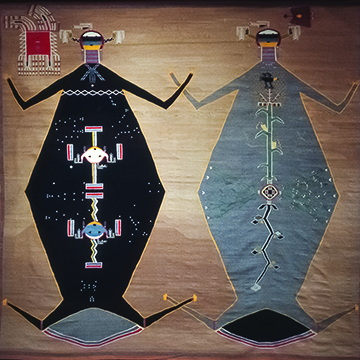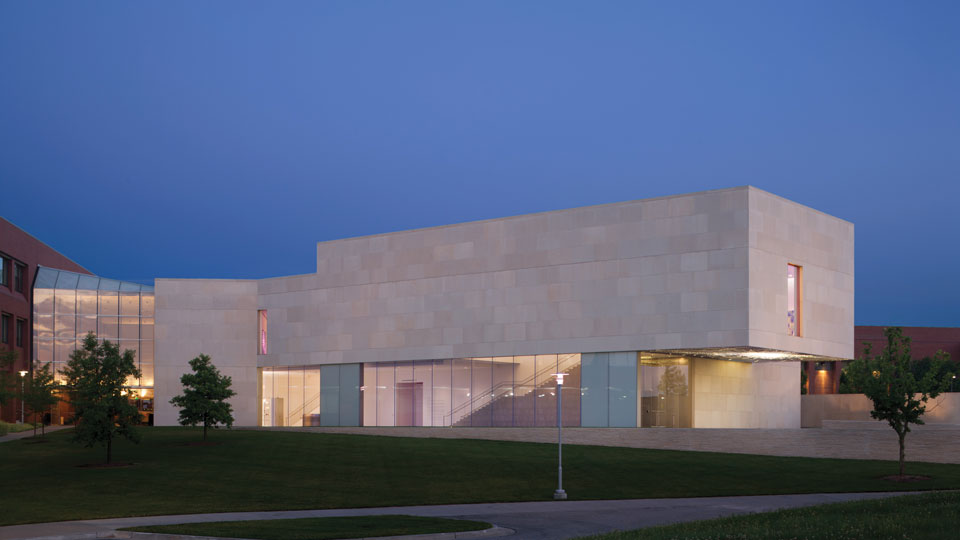Navajo Sandpainting Textiles
By combining spirituality, harmony, history and skill, Navajo sandpainting textile weavers produced works that have the power to aesthetically captivate as well as preserve forever the inherent attributes of Navajo religious culture. To do so, weavers had to overcome societal tenets forbidding the permanent visual rendering of holy figures, as well as crossing gender roles long established within the Navajo lifestyle. Examples of the vitality and abundant talent of Navajo sandpainting textile weavers will be on display at the JCCC Gallery of Art.
Sandpaintings are a part of the Navajo’s intricate ceremonial healing processes used to summon supernatural forces and holy figures from the Navajo Creation stories in order to restore a harmonious and balanced relationship between the patient and the Holy People. The weavings based upon these sandpaintings represent the graphic and sacred renderings of the Navajo’s spiritual world, images that would not otherwise be available for outside cultures to see, since the sandpainting is a temporary artifact with the intent of being destroyed as a part of the healing ceremony. Since stories abound as to the results of offending the Holy People by permanently rendering them as a visual artistic object, many weavers have been known to circumvent their anger by omitting a detail of the design or slightly modifying the entire image.
A weaver must possess knowledge beyond the visual aspects of the sandpainting figures; an extraordinary amount of skill and confidence must also be an attribute. Navajo sandpainting textiles are often larger than most other textile styles, and therefore demand physical endurance and intricate precision beyond that expected in other weaving genres.
The weavings in the exhibition date from 1925 to 1970, although the Navajo still do the intricate work. Textiles have been known to remain on the loom for three years before final completion, not including the time required to construct an oversize loom and gather extra amounts of wool needed. Yet the final product, a captivating field of figures and symbols, remains as a testimony to the rich culture of the Navajo people.
The gallery guide includes an essay by John Gerber, curator, Kennedy Museum of American Art, Ohio University, Athens, Ohio. Gerber will present a lecture in conjunction with the opening reception.




